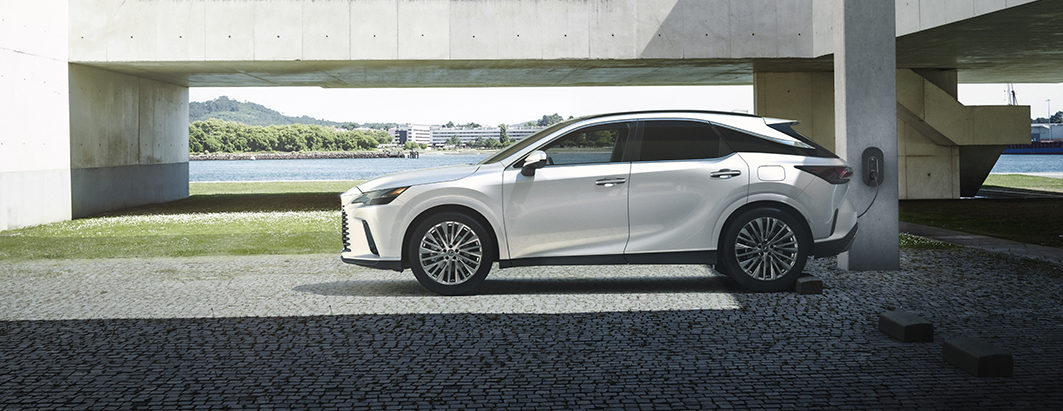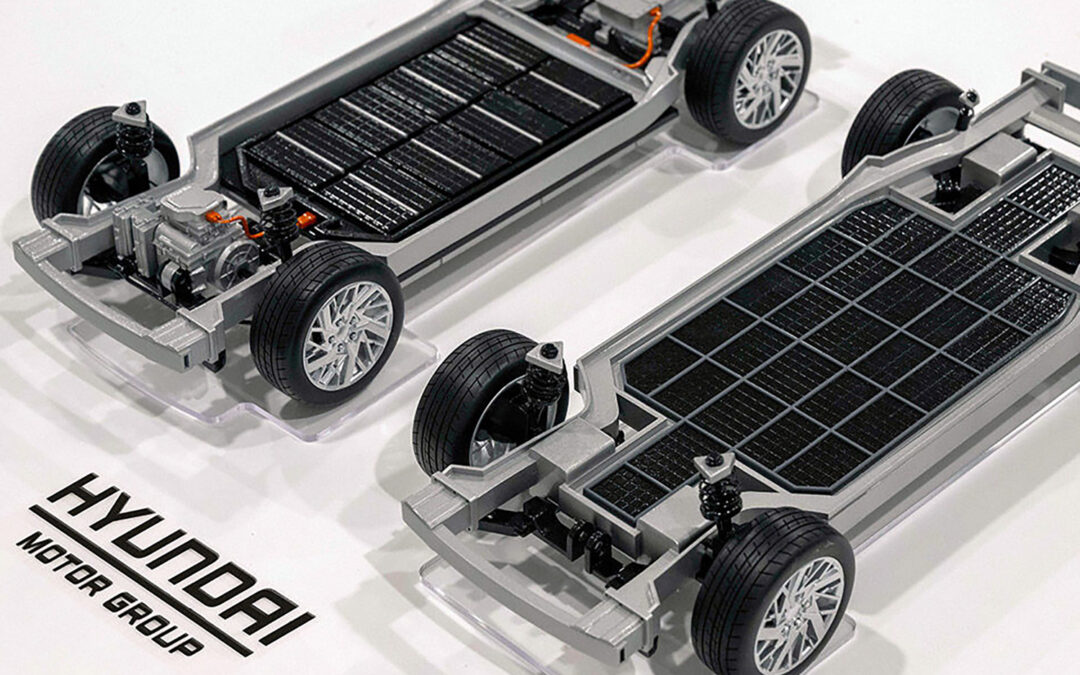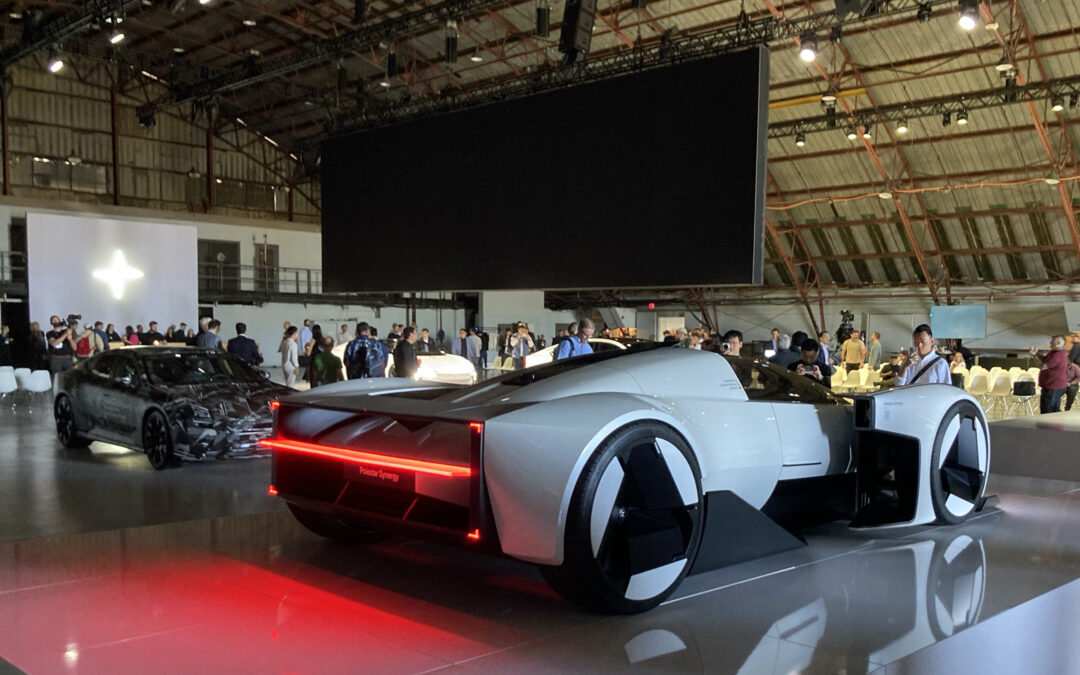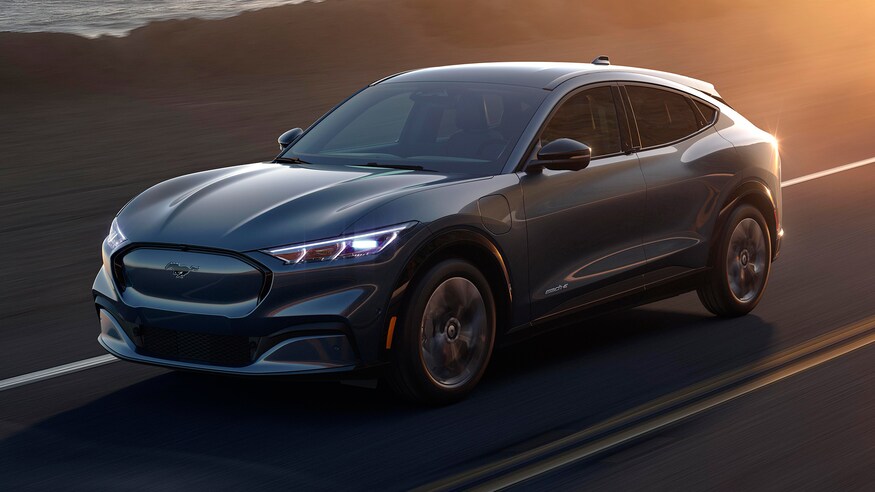Getting the rework of the fifth-generation Lexus RX wrong was not an option — it’s the company’s best seller. The 2023 model has a bolder look, a new platform and, at this point, three powertrain choices. When launched later this year it will be offered in RX 350, RX 350h and RX 500h F Sport Performance models with no fewer than 13 different trim levels. Next year, the lineup will be joined by the RX 450h+ plug-in hybrid.

2023 Lexus RX 350h / Graeme Fletcher, The Charge
The rework starts with a new platform that’s 90 kilograms lighter than the outgoing unit. While the overall length stays the same, the wheelbase grows by 60 millimetres to 2,850-mm and the width of the rear track rises by 65 mm. This brings a larger footprint and a 15 mm lower centre of gravity, which is good for the ride quality and handling.
The interior is also much nicer and certainly more user-friendly. From the body-hugging front seats and slick digital instrumentation to an available 14-inch multimedia screen, it takes big steps forward. As is to be expected, the material quality is top-notch, as is the fit-and-finish — Toyota Motor Manufacturing Canada (TMMC) in Cambridge, ON, where the RX is built, is the second most awarded assembly plant in the world behind Toyota’s Kyushu plant in Japan.
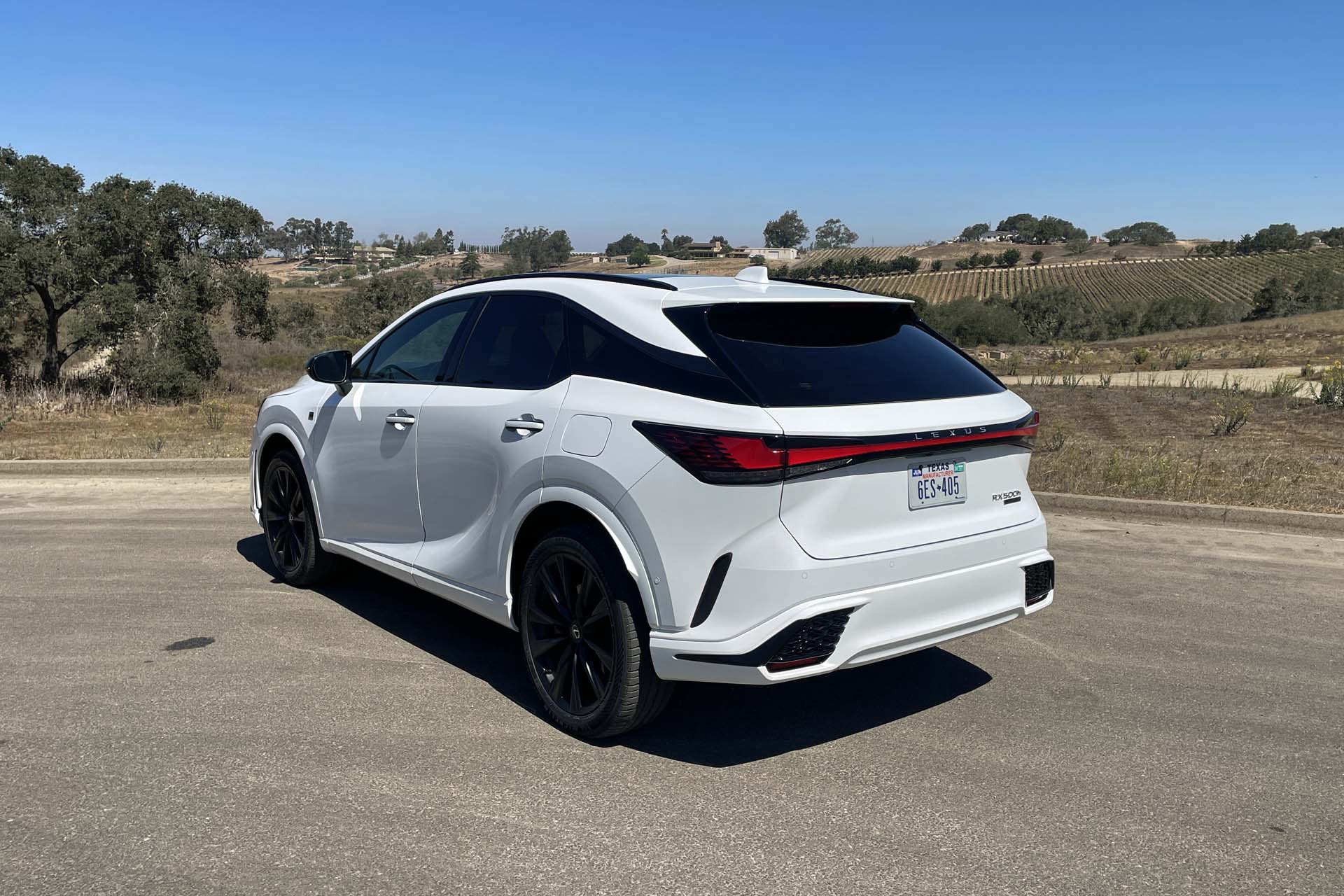
2023 Lexus RX 500h / Graeme Fletcher, The Charge
The biggest single improvement is the multimedia setup. Gone is the finnicky touch pad-based unit in favour of a clean and clear system that’s easily mastered. The lower trims use a sizeable nine-inch screen; move up the grades and you’ll find the larger 14-incher. The extra size gives all of the functions more breathing space. Along with all the usual applications, including Apple CarPlay and Android Auto, it houses an available 21-speaker Mark Levinson sound system and the drive modes.
Here you’ll find Eco (only for use when both the battery and gas tank are very low!), Normal for everyday driving and Sport for the fun times. Custom allows the driver to pick the settings for the powertrain, steering and air conditioning. The RX 500h and RX 350 with the F Sport package aboard add suspension settings to the mix. The shortcoming is the only way to change the drive mode is through the infotainment system. Having a separate set of controls, as the Lexus NX does, would bring faster and easier access.
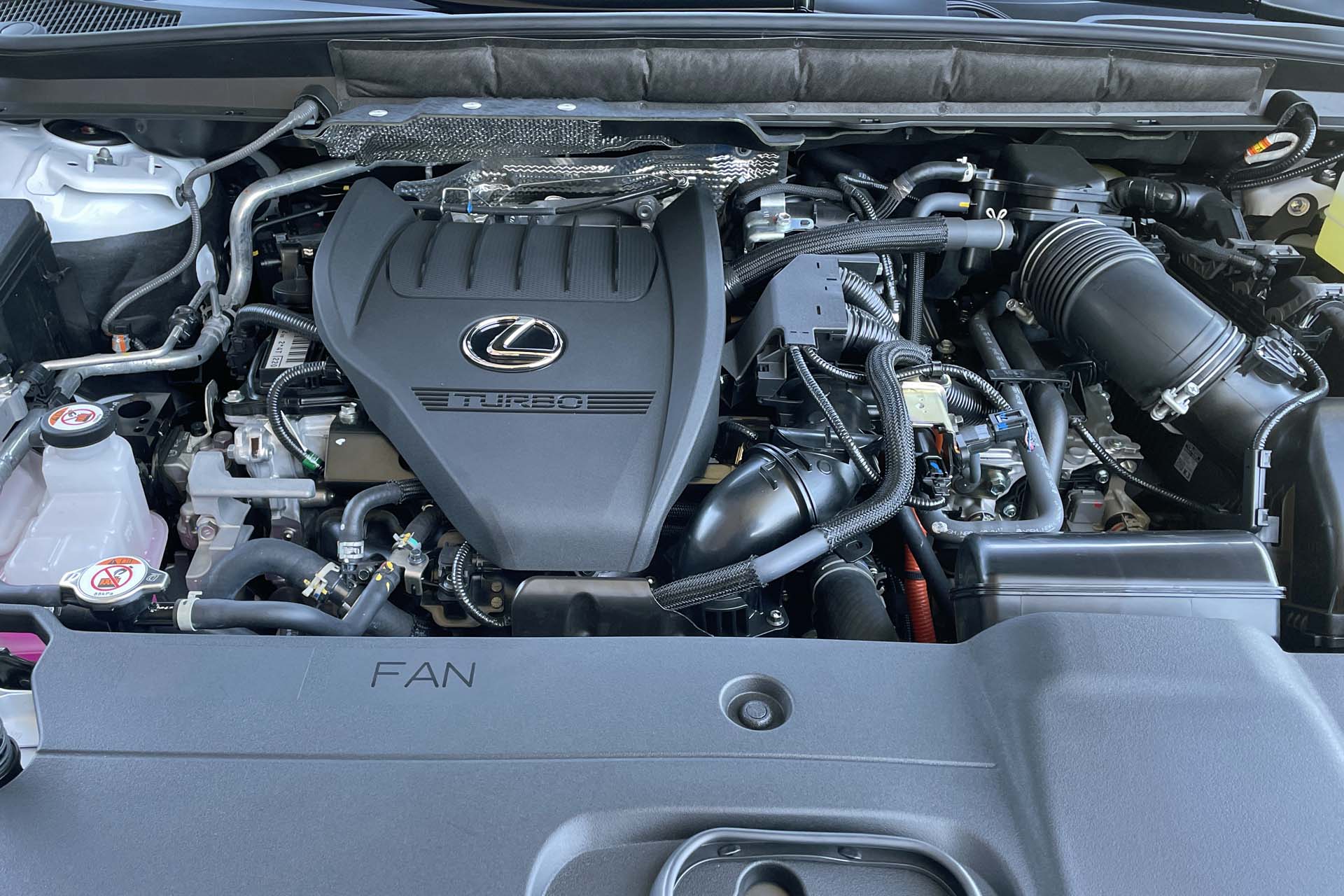
2023 Lexus RX 500h / Graeme Fletcher, The Charge
The powertrain starting point is the gas-only 2.4-litre turbo-four found in the RX 350. It twists out 275 horsepower and 317 pound-feet of torque, and works with an eight-speed automatic transmission to drive all four wheels. Next up is the RX 350h hybrid. It uses a 2.5L four-cylinder engine, two electric motor/generators and a continually variable transmission (CVT) to drive the front wheels. A third, rear-mounted, electric motor adds all-wheel-drive. This combination combines to produce 246 hp. It will find favour with those who value comfort and economy over outright driving fun.
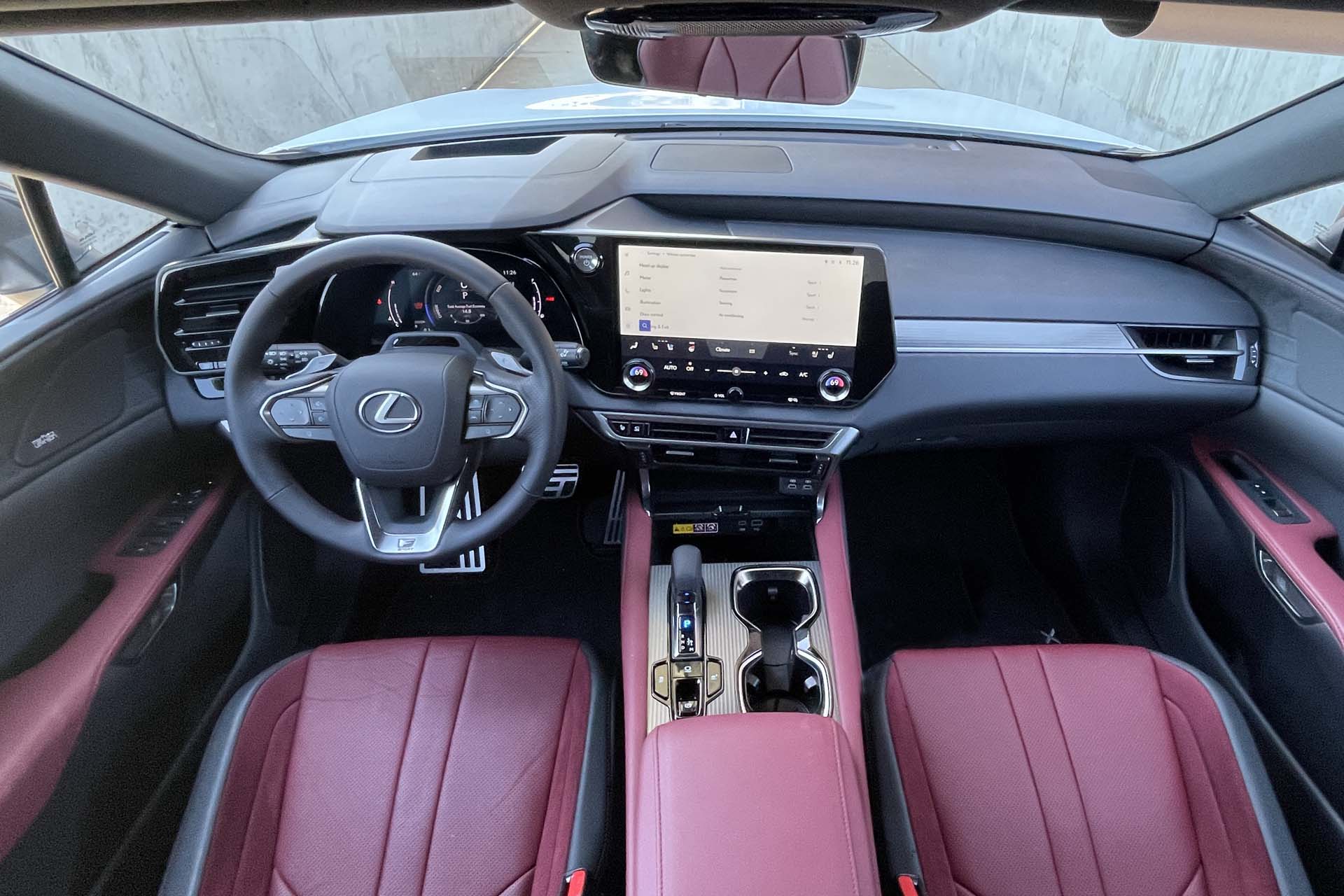
2023 Lexus RX 500h / Graeme Fletcher, The Charge
The RX 450h+ plug-in hybrid will likely be the sales sleeper in the RX range. While it uses much of the same technology as the 350h, during the test it felt so much crisper. No specifications were released, but based on the NX 450h+ the RX should get 300+ horsepower and feature an 18.1 kilowatt/hour battery. The test vehicle was showing 58 kilometres as the electric-only driving range. Selecting the EV mode saw it purr along nicely. With both power sources working it was responsive and benefited from the adaptive suspension — on the drive route it did not feel anywhere near as willowy as the 350h.

2023 Lexus RX 450h+ / Graeme Fletcher, The Charge
The model of choice has to be the RX 500h F Sport Performance with Direct4. This thing is fast, efficient and certainly the most fun. Part of the reason is the 2.5L engine used in the 350h has been dropped in favour of the turbo-four from the RX 350. It works with a single front motor/generator and a more powerful rear electric motor. The turbo-four and 86 hp motor work with a six-speed automatic transmission to drive the front wheels. At the back, there’s a 107 hp electric motor. The two power sources combine to deliver a net output of 367 hp and, more importantly, 406 pound-feet of torque between 2,000 and 3,000 rpm.
The combination delivers a rewarding work ethic. The 500h’s run to 100 kilometres an hour drops from 7.2 seconds for the RX 350 to 5.9 seconds, and it manages this faster time while improving the average fuel economy by 1.1 litres per 100 kilometres. Fast and frugal is a winning combo.
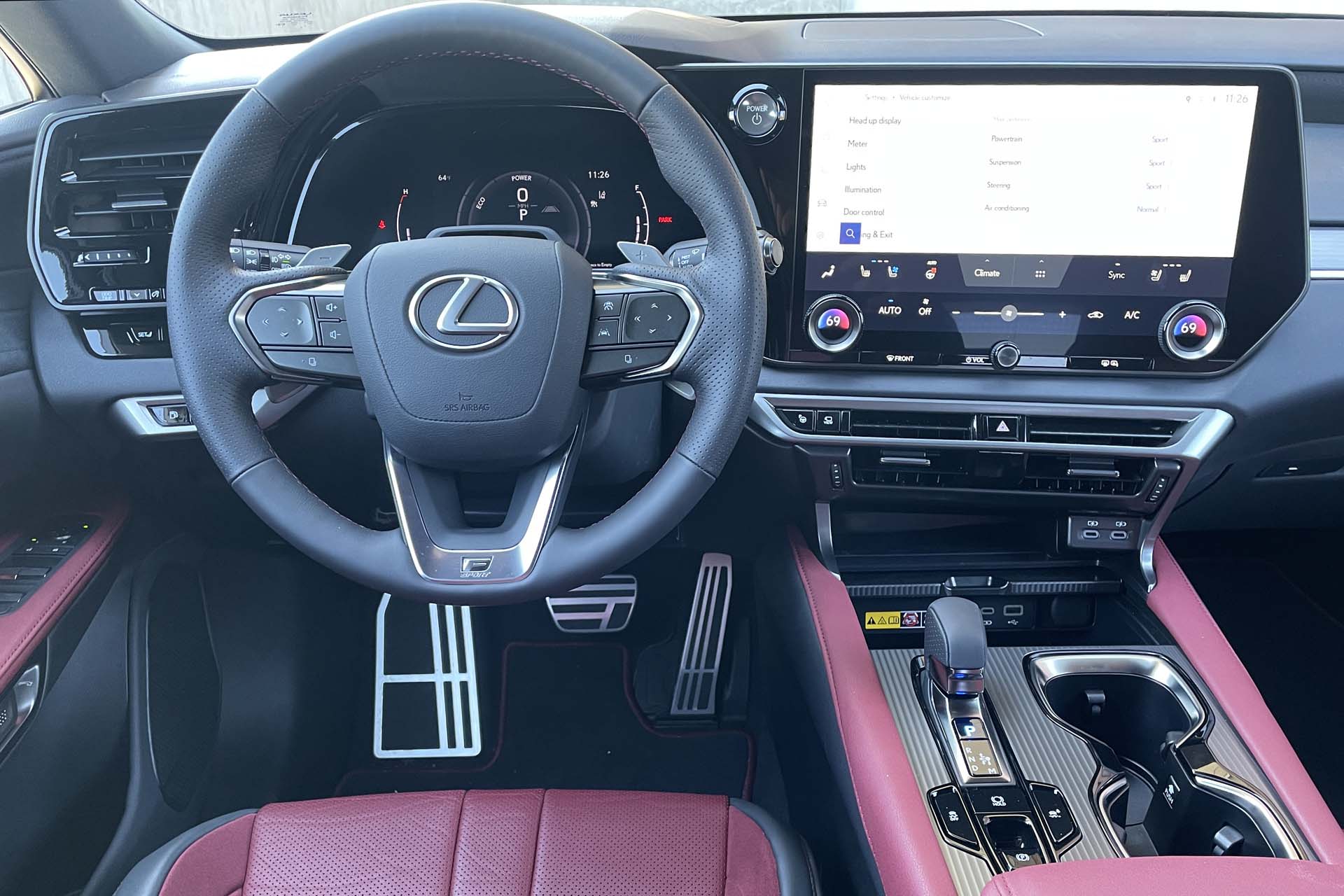
2023 Lexus RX 500h / Graeme Fletcher, The Charge
Power aside, the reason the RX 500h feels so sharp is down to three key technologies. The first is the aforementioned adaptive suspension. It has normal (compliant) and sport (firmer with much less body roll) modes. The damping is variable and tailored to suit the drive mode selected. The other improvement is the front struts now work with a five-link rear suspension. It does a better job of keeping the tire’s contact patch in touch with the road.
Next is the available four-wheel steering. In this case, the rear wheels can turn up to four degrees. At slow speeds the rear wheels turn in the opposite direction to the front wheels, which shortens the turning circle. The better part is the effect it has on the handling. Turning the rear wheels in the same direction as the front wheels brings a much crisper response to steering input – the other models are crisp; this thing is sporty. As it does in electric vehicles, the rear steer also does a good job of masking the RX’s weight, so it feels much more alive.
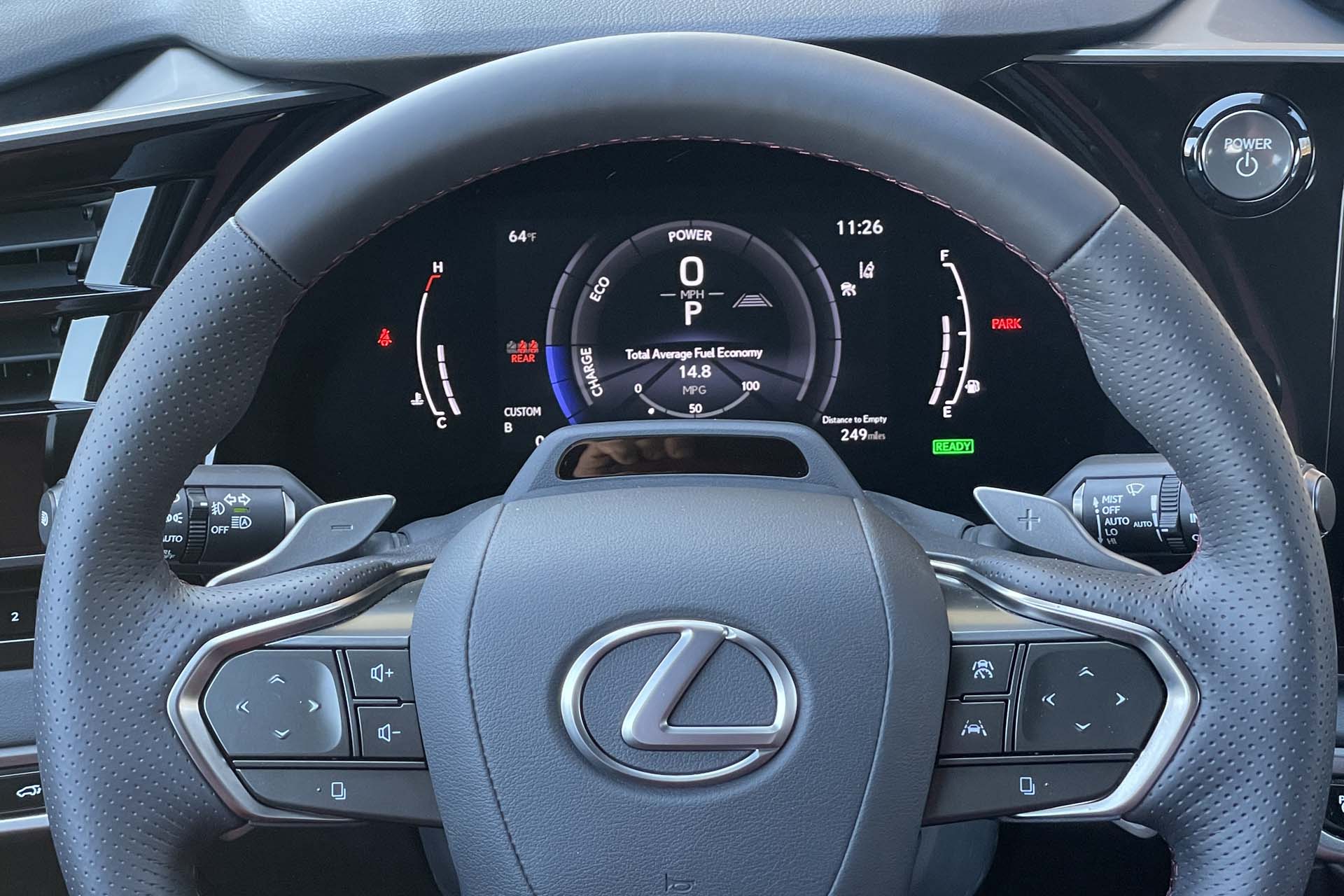
2023 Lexus RX 500h / Graeme Fletcher, The Charge
The third ingredient is the Direct4 all-wheel-drive system. It minimizes squat under hard acceleration and nose dive under braking. The key is varying the power split sees the 500h turn into a corner with much less understeer and it hauls out of it with more authority. The setup is good enough it even works as the first level of stability control.
Through the twisty sections of the drive the combined effects of these technologies delivered a dynamic ride. While the RX 500h looks like its siblings it sure doesn’t feel or drive like them, especially when the going get fast!
Lexus will announce the RX pricing closer to the launch later this year. While the company says the RX 350h will be the popular model, the RX 500h F Sport Performance, if it’s sensibly priced, represents a dynamic alternative that’s destined to appeal to a more youthful audience. Regardless, the reworked range is going to maintain Lexus’ lead in a very popular and highly competitive segment.
